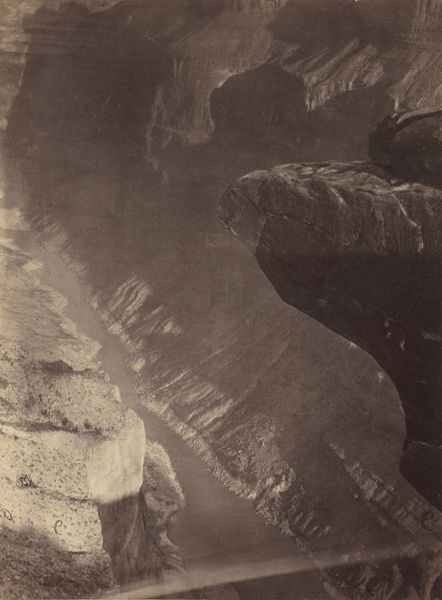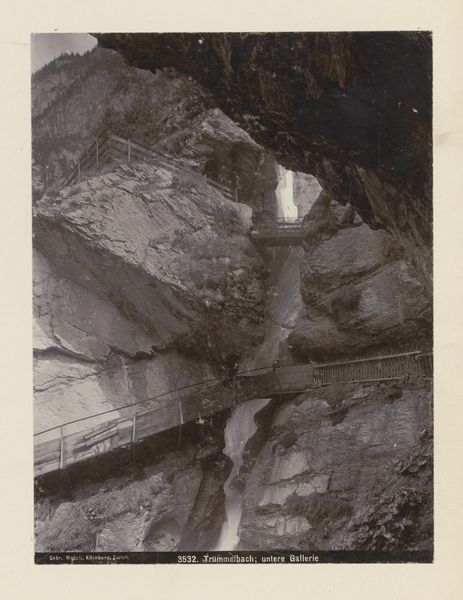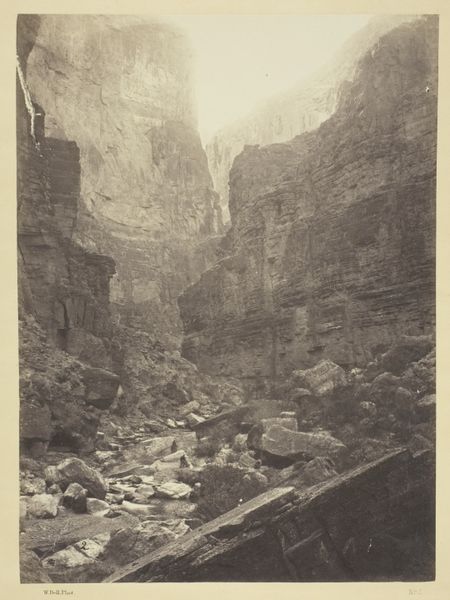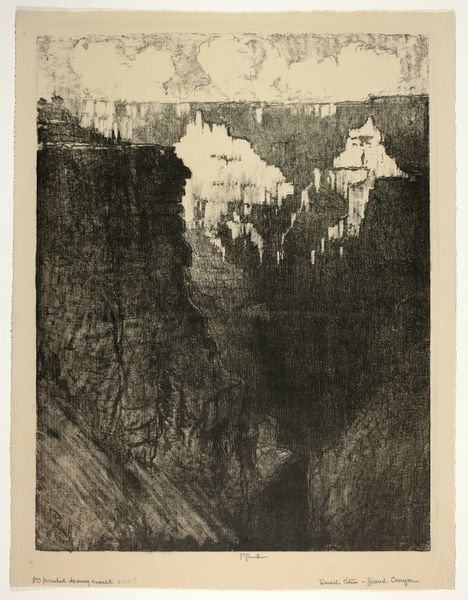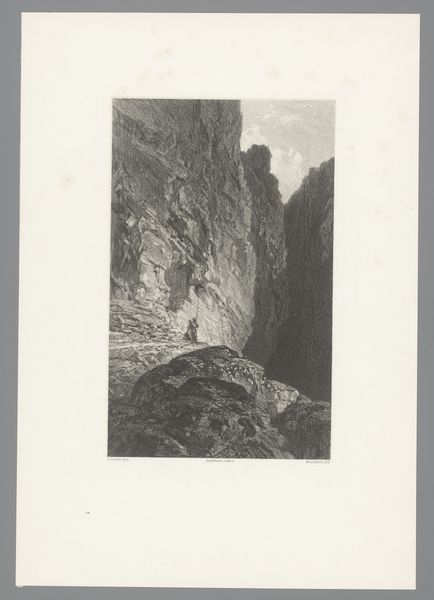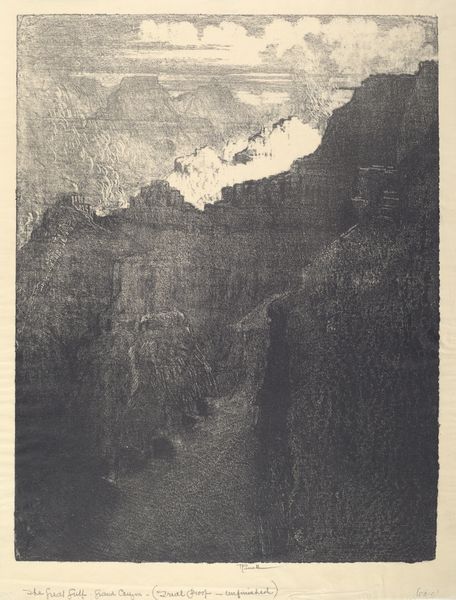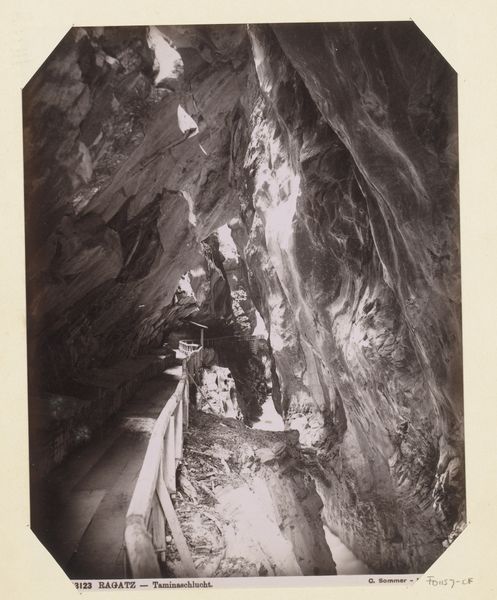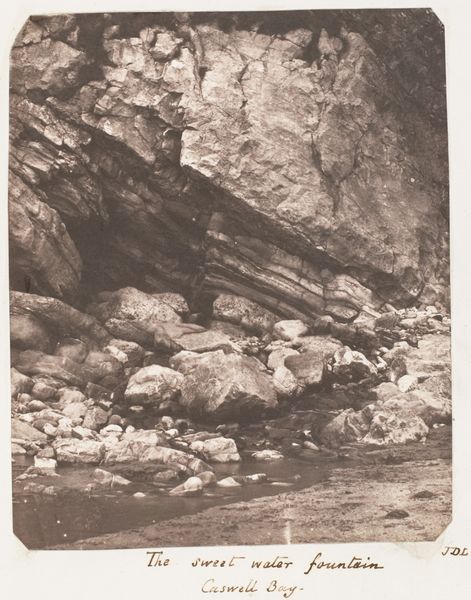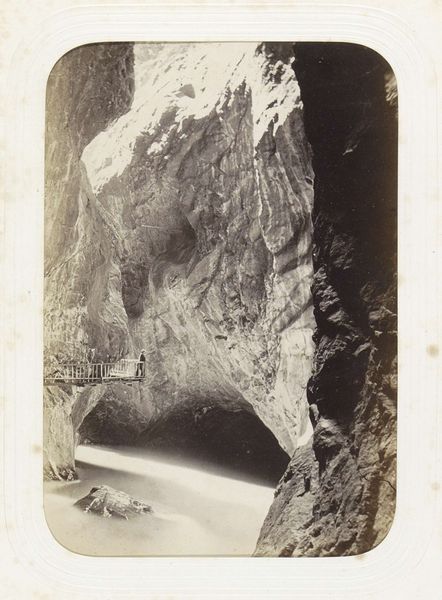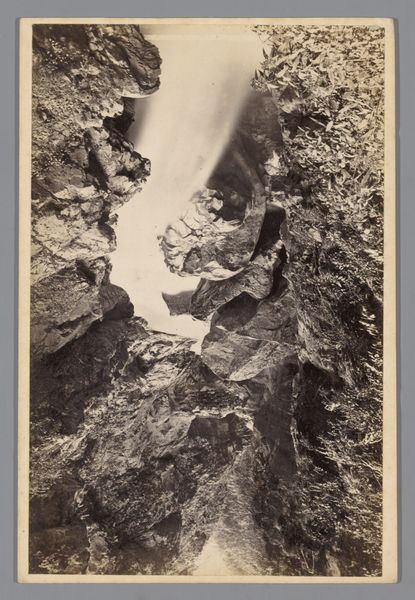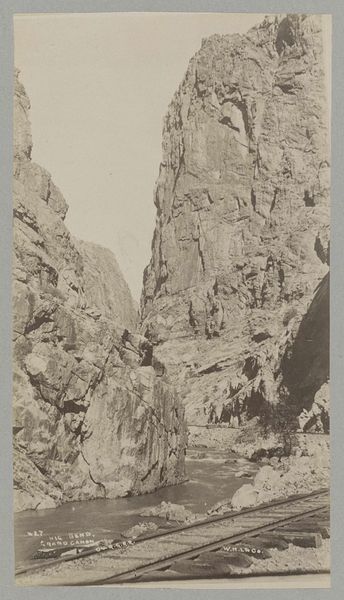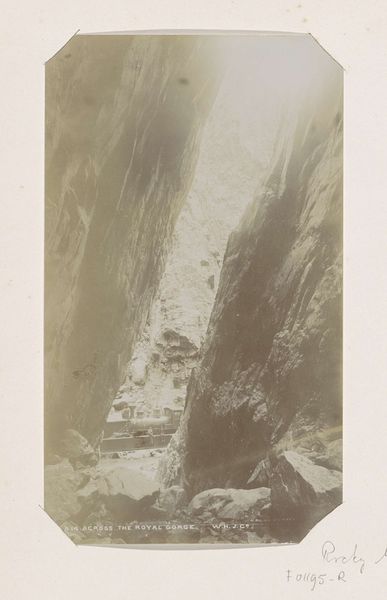
Looking South into the Grand Cañon, Colorado River, Sheavwitz Crossing 1872
0:00
0:00
print, photography
#
16_19th-century
# print
#
landscape
#
photography
#
hudson-river-school
#
realism
Dimensions: 27.4 × 20.2 cm (image/paper); 49.8 × 38.2 cm (album page)
Copyright: Public Domain
Curator: What a fascinating image of the American West. This is "Looking South into the Grand Cañon, Colorado River, Sheavwitz Crossing," a photograph taken in 1872 by William Bell. It's currently held at The Art Institute of Chicago. Editor: It's incredibly stark, almost otherworldly. The tonal range is fascinating, from the nearly bleached-out sky to the deep shadows in the canyon walls. The texture is something you could almost reach out and touch. I wonder about the specific printing process. Curator: Bell was part of the Wheeler Expedition, and these images were crucial for documenting and surveying the western territories. Photography, then, played a key role in shaping public perception and, ultimately, the political control of the land. Editor: Right, but think about the logistics: the bulky cameras, the fragile glass plates, the portable darkroom required to develop these images on site! The labor involved is incredible. We must ask what choices Bell made about angle and exposure when photographing such an overwhelming place? Curator: I think his choice of vantage point is intriguing, too. By placing us on the edge, looking into the abyss, Bell creates a sense of awe and vulnerability. This evokes the sublime, doesn’t it? Influenced by the aesthetics of the Hudson River School and painters like Thomas Cole, do you agree that Bell, like them, encourages a sense of national pride by showing the magnificence of the land? Editor: I appreciate the allusion to the sublime, however I think what’s important here is the earth and its geologic layers, evidencing an unfathomable length of time to contemplate the geological process, the grinding down of rock and silt, and the flow of the river is truly something to be wondered at. These considerations really challenge established hierarchies within artistic creation! Curator: That's a compelling perspective; thank you for pointing out a nuance I’d not seen before. It seems that photography, in this context, became not just documentation, but also a tool for both ideological formation and deeper material reflection. Editor: Yes! This image reveals more than the aesthetic landscape it is seemingly trying to achieve and in fact brings forth so much more on what comprises the very idea of the landscape itself.
Comments
No comments
Be the first to comment and join the conversation on the ultimate creative platform.
